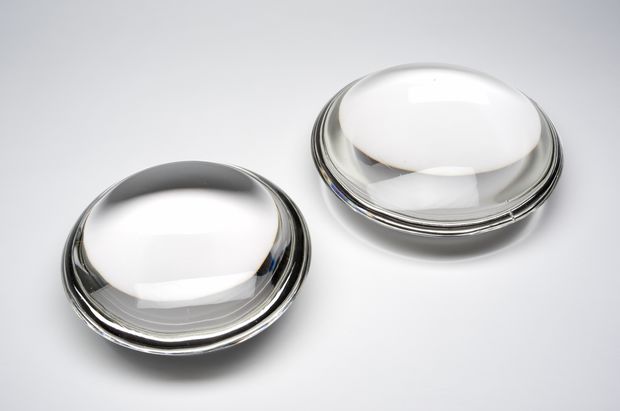Meet Natali Rodrigues, Laurie Wagman Artist-in-Residence at Tyler

Natali Rodrigues is a glass artist and the spring 2024 Laurie Wagman Artist-in-Residence at the Tyler School of Art and Architecture. During her time at Tyler, she has created a body of work that will be on view at AUTOMAT in an exhibition curated by Tyler alum and Associate Professor Brynn Hurlstone (MFA ’23) titled A Sliver of the Moon / A Single Branch of Flowering Plum.
“Each of the objects in the exhibition is an investigation of ceaseless change using mitosis as a metaphor, symbol, and/or method of production,” Rodrigues described in an artist statement. “The exhibition invites viewers to experience "a world of refraction, distillation, excessive textural noise, and quiet, blessed quiet, amongst the frenzied dance of life.”
The process of creating this work while at Tyler has been a dream come true for Rodrigues, who is an associate professor of glass at Alberta University of the Arts in Canada. She describes the experience as life changing. “I feel like the things that have happened here in terms of forwarding my research and my understanding of the motivations of why I want to make have been like gasoline on a fire. I feel like I’ve exploded in a way that I couldn’t have imagined without this space and time and ability to make mistakes.”
“As professors, I think it’s easy to push certain parts of your practice aside,” she continued. “Failure, which is the most important tool we have, is the one that goes away the quickest because so often we just don’t have time to break something or try a new way of cold working or prototype a form we’ve been dreaming about for 20 years. Coming here, I’ve been able to do all those things.”
During her time at Tyler, Rodrigues discovered a recurring motif in her creations, through which she began to learn even more about the project, an outcome that she finds exciting.
“One of the things I’ve realized in this whole process is that I think my work is a resistance to otherness,” she explained. “I’m not interested in splitting myself or the viewer up into something other than a human who, with me as a human, can look at this work in a way that shares our humanity.”
For this body of work, Rodrigues looked to mathematics, geology, and geography—in particular the relationships people have with pilgrimage, liminal experience, and the land. She is careful to learn about indigenous stories and guidelines about the places she visits, such as Hawai’i Island.
“The last time I was there, I noticed all of these offerings, and they weren’t necessarily indigenous; they were from other islands and other places around the Pacific Rim,” she recalled. “I wanted to make sure that I had an understanding of what a place might mean locally, to the indigenous owners, and also to the secular people coming there.”
Rodrigues describes conversations she has had with people who have visited Uluru and Hawai’i as feeling “like they’ve met something in themselves that they didn’t know before.”
“I think what we do as artists is synthesize all of these disparate ways of thinking and describing and find the essence of it and try and make objects that speak to that.”
Of course, this has led Rodrigues down more paths of curiosity. “I now have a whole bunch of other questions about time and space, the notion of duality and singularity.”
Her focus recently has been on learning about Zen Buddhism, including a particular philosophy that resonated with her and the body of work she created during her time as an artist in residence.
“Non-dualism is the idea that you and I and all the other humans in the world are one body, because we are one group of beings. Within that, my actions affect you in a way that I can’t imagine.”
Rodrigues likens this to the specific kind of communication that occurs between artist and viewer once a piece is on display without the presence of the artist.
“At some point this work will be out there without me to provide any story behind it, and people will come up to it, and they will understand something. The more I’ve put into my thinking behind it, the more likely it is that they’ll understand what it is I’m trying to say, even if they don’t speak English or have any knowledge of Zen or any idea about mitosis as a liberating notion of constant change.”
This speaks to the fundamentally human nature of artmaking to communicate with strangers, which is what she hopes to happen when people visit her exhibition at AUTOMAT.
“This exhibition is all experimental pieces,” she described. “Being able to do that was also a gift, because the pieces don’t have the same refined answer at the end of it.”
A Sliver of the Moon / A Single Branch of Flowering Plum is on view at the AUTOMAT April 11—May 4, 2024.